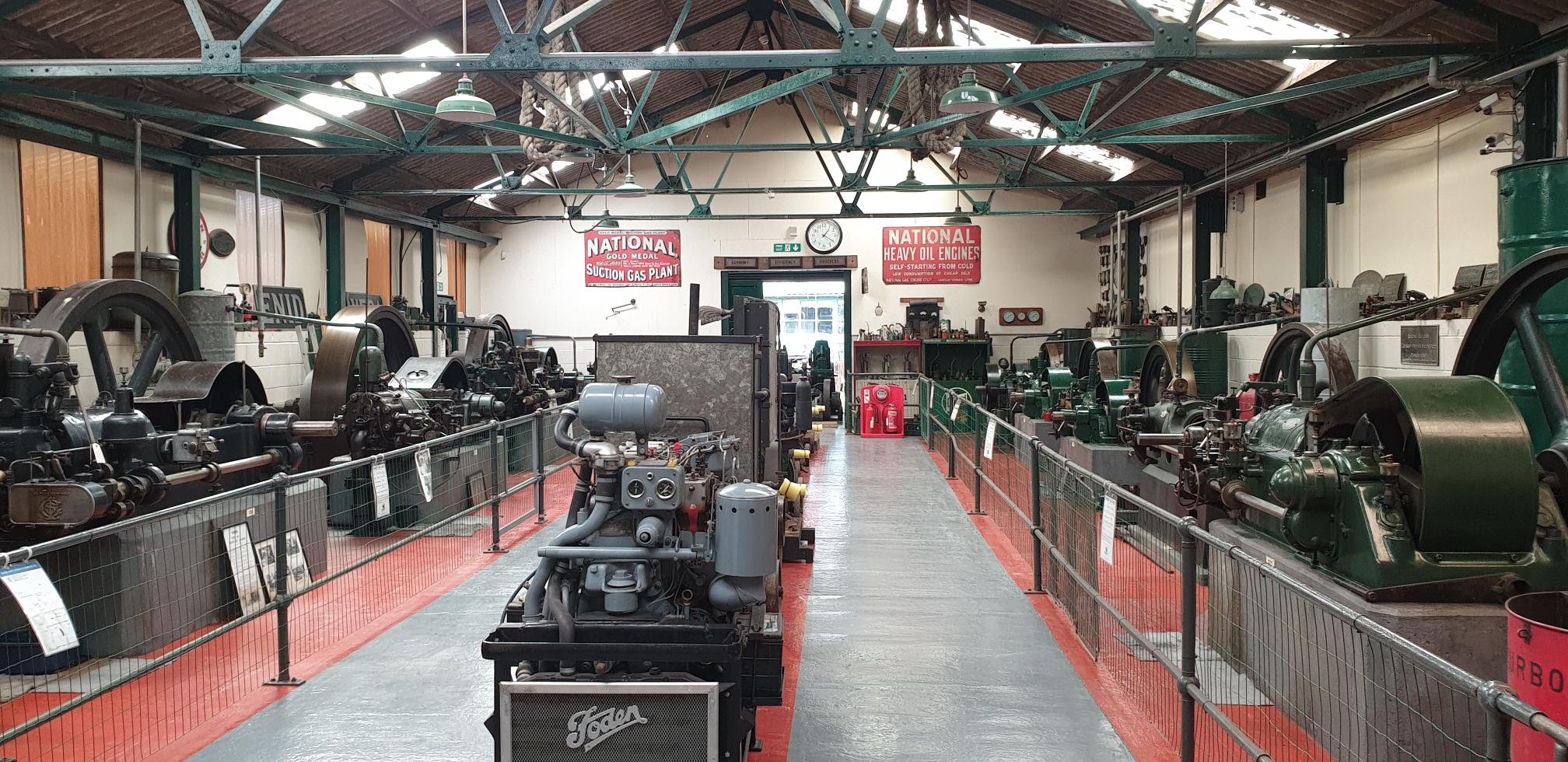
Steam’s twilight years
The Inter-War Years
After the First World War ended, steam locomotive production continued at Vulcan Foundry and in 1925 the 4,000 steam locomotive ~ one of a batch of fifty, three-cylinder compound engines for the London, Midland and Scottish Railway ~ was completed. By 1927 the workforce totaled some 2200 employees.
In January 1930 journalists and photographers from the national press competed with the local reporters over the coverage of a story which was to make front-page news throughout the nation. The occasion was the first Vulcan locomotive to be transported by road for dispatch to India. This was a major change from the early days when the locomotives had to be partly dismantled before being slung aboard the old windjammers by block and tackle with the help of a donkey engine.
The year 1935 saw the completion of the largest locomotive (in terms of its overall dimensions) to be built at the Vulcan Works, to date. This was the first of a batch of twenty-four 4-8-4 locomotives for the Chinese National Railways; each had an overall length of 93ft 2.5 in (28.4m) over the engine and the tender.
The War Effort
A totally different line of production for the Company was the manufacture of fifty light tanks, built to war office specifications; these were subsequently to see service in Flanders and North Africa.
During the mid nineteen thirties when the territorial ambitions of the Third Reich were rapidly preparing the way for a second European conflict within a generation, the Vulcan Works was building light tanks for the War Office. Towards the end of 1936 the Company was employed designing an entirely new armoured fighting vehicle.
The pilot models of the Matilda tank were completed at the Vulcan Works by March 1928 and when war broke out, in 1939, the Matilda was Britian’s most powerful tanktank, weighing 26 tons (26,400kg) and carrying 3.5in (90mm) thickness of armour. Both this model and its MkII successor, better known as ‘Waltzing Matilda’, were popular for their ability to take punishment, despite their being out-gunned and out-run by the opposition. In all, Vulcan manufactured over 600 Matildas for the War Office. The tanks were to give valuable service in Flanders, North Africa, on the North Russian front and later in the Pacific theatre.
During the war and perhaps as important as the production of the Matilda Tanks, but lacking the glamour, emerged machine gun mountings, and vast quantities of torpedo parts which totaled over 10,000 in major components and 40,000 smaller details. At the highest point of production it was said that Vulcan's output per head exceed that of any other similar works in the country. In between times, the workforce also managed to produce a number of ‘Austerity’ type steam locomotives.
In 1944 the workforce reached its peak of 4,128 employees.
Post War
Immediately after World War II, the Ministry of Supply placed an order with the Vulcan Foundry to design a locomotive for use in the war ravaged countries of Belgium, Czechoslovakia, Yugoslavia, Poland and Luxembourg. Many meetings took place between members of the British and Allied Governments together with engineers from Vulcan and the continent to produce one design which would satisfy the varied operating conditions of the five countries in which the locomotives were to be used. The final result was the ‘Liberation’ class of 2-8-0 locomotives, noted for their free steaming and economical coal consumption.
The simplicity of design and ease of maintenance catered for the difficulties regarding post-war lack of repair facilities on the Continent. With the exception of proprietary fittings, all the details were designed to metric dimensions and all machined parts were manufactured to international standards for interchangeability. Altogether 120 Liberation Class locomotives were built at Vulcan in 1946 and shipped the same year.
Between 1833 and 1895 the Vulcan Foundry produced some 6,000 locomotives to become the 4th largest locomotive building firm in the country, almost 70% of which were exported.
Vulcan Foundry received its final steam locomotive order in 1954. In view of the impending change to diesel and electric locomotive production, an Austerity version of an Indian 'Y' Class locomotive was quickly designed to meet an order for three locomotives from North Borneo Railways - the result a neat 2-6-2 tender locomotive of 58'-0" length, weighing 85 tons.
One of the locomotives was restored and proudly re-launched on 22nd January 2000, by the North Borneo Railways, in honour of Kota Kinabula, Sabah's capital, achieving city status. The second locomotive entered service in early 2001, the third being used for spares.
Not only do these steam engines represent the last of a fleet that have plied the tracks through Borneo since the late 1880's they are also part of the only few functional wood burners left in the world.
On the 13th June 1956 the last steam locomotive, the 6,204th, was tested at Vulcan Works and this completed an order for forty-six 2-8-4 locomotives for the East African Railways, and the last of an illustrious line of steam locomotives to be built at the works.the end of an era.and the start of a new one.
Next chapter: Dawn of the diesel era




